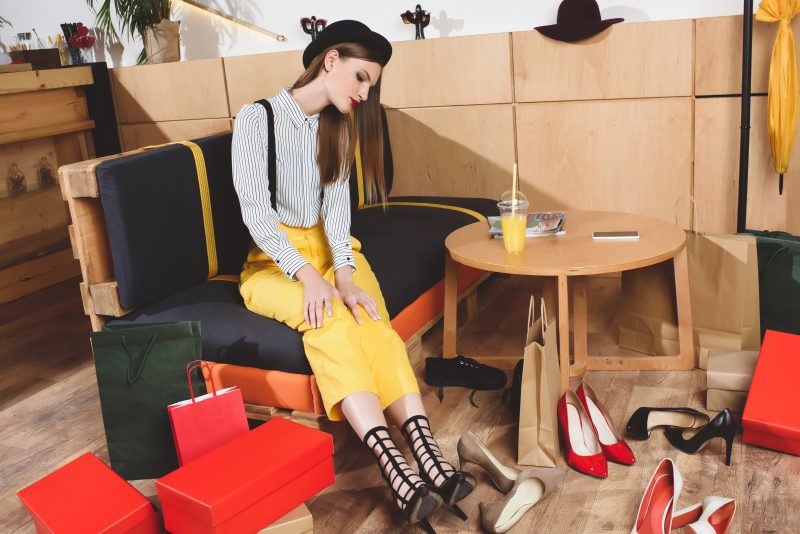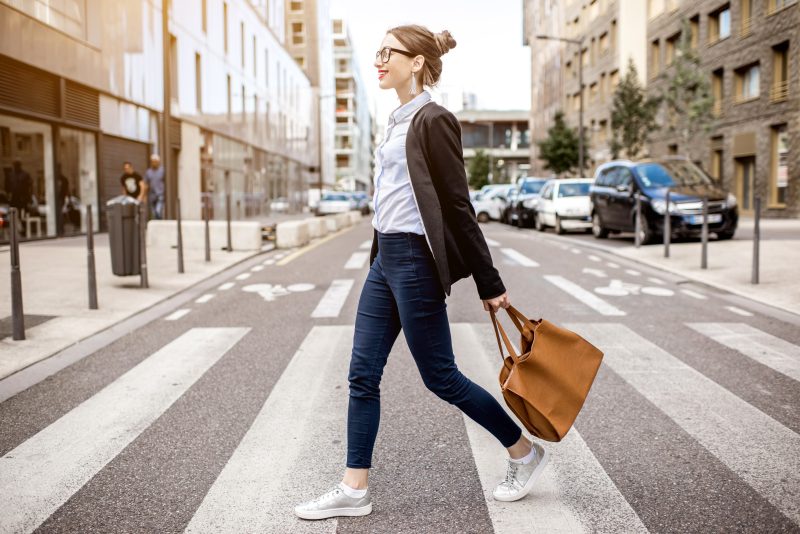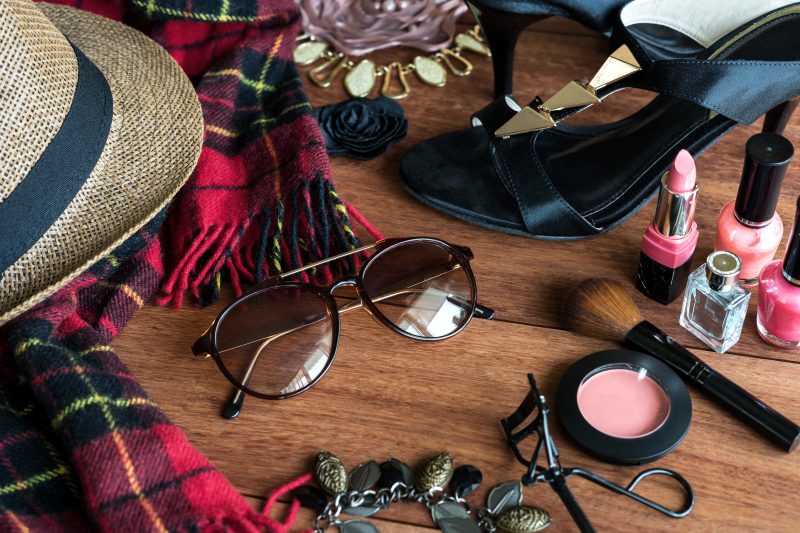Okay so this is going to sound absolutely unhinged, but hear me out. Last month I was doing my usual Target run for necessities (you know, the classic “I need toilet paper and somehow spent $200” situation) when I decided to swing by H&M afterward. But here’s the thing – I was already exhausted from trying to adult, my phone was dying, and honestly I just wanted to go home and make TikToks about how broke I am.
Then I remembered my mom mentioning she’d found some decent basics at… wait for it… the grocery store. Which initially made me think she’d finally lost it, because like, who buys clothes next to the bananas? But I was curious enough to check it out the next time I went grocery shopping, and honestly? It completely changed how I think about where to find good pieces.
I’m talking about those supermarket clothing sections that everyone walks past without a second thought. You know the ones – tucked between household goods and the pharmacy, usually looking kind of sad and overlooked. Turns out, some of the most put-together people I follow on social media have been secretly shopping there this whole time, and nobody talks about it because… well, it’s not exactly on-brand to admit you got your outfit at the same place you buy milk.
The whole thing started when I was scrolling through Instagram stories and saw this girl I really look up to – she’s got like 500k followers and always looks effortlessly chic – wearing this perfect oversized white button-down. I was about to ask where it was from (you know how we do in the DMs), but then I caught a glimpse of her grocery haul in the next story and realized she was at the same store chain I shop at. Coincidence? I don’t think so.
So obviously I had to investigate. Next grocery run, I actually paid attention to the clothing section instead of speed-walking past it like usual. And guys… some of this stuff is actually really good? Like, not “good for the price” but genuinely good. The cotton t-shirts felt substantial, not see-through and flimsy like some I’ve bought from fast fashion brands for triple the price. The cut was clean, no weird bunching or awkward seams.
I started with basics because that felt safest – a white tee, some black leggings, nothing too adventurous. Figured if they were terrible, I was only out like twenty bucks total. But when I got home and tried everything on? The fit was actually better than some of my “real” clothes. The white tee didn’t go completely transparent the second I put it on (which, let’s be real, is a problem with like 90% of white tees under $30). The leggings didn’t roll down or get weird and saggy after an hour of wearing them.
This got me thinking about how we decide where it’s “acceptable” to shop. Like, I’ll spend $40 on a basic tee from Urban Outfitters without blinking, but the idea of buying clothes at a grocery store felt somehow… wrong? Even though the quality was comparable and the price was literally half. It’s such a weird mental block we have about shopping “appropriately.”
I started paying more attention to what other creators were actually wearing versus where they claimed to shop. You know how everyone’s always like “outfit details linked!” but then half the links are to $200 jeans? Well, I started screenshotting outfits I liked and then going on these little investigative missions to figure out if I could recreate them for less. Turns out, a lot of those effortless, expensive-looking basics… they’re not actually expensive at all.
The trick is knowing what to look for and what to avoid. The plain pieces? Usually great. Cotton basics, simple knits, classic cuts – this is where supermarket clothing actually shines. They’re not trying to follow micro-trends or add unnecessary details that make things look cheap. Just solid, wearable pieces that do their job.
But the trendy stuff? Skip it. Anything with too many prints, weird cutouts, or obvious attempts to copy whatever’s viral on TikTok usually looks exactly like what it is – a cheap imitation. The magic happens with the boring stuff that most people overlook. Plain crew neck sweaters, basic jeans, simple dresses that you can style up or down.
I’ve been building this little capsule wardrobe of grocery store finds, and honestly? Some of my most-complimented pieces come from there now. I wore this ribbed long-sleeve tee (cost me $8) to a coffee meeting last week, and the person I was with asked if it was from Everlane. When I told her where it was actually from, she immediately wanted to know which location because she was going grocery shopping later that day anyway.
That’s become my favorite thing about this whole discovery – the treasure hunt aspect. Since stock varies by location and moves pretty quickly, finding something really good feels like hitting the jackpot. I found this incredible oversized blazer a few months ago that I literally haven’t seen anywhere else, online or in other stores. It’s become one of my signature pieces, and nobody would ever guess where it came from.
The environmental angle is interesting too. I know fast fashion has major sustainability issues, but here’s the thing – if you’re buying quality pieces that actually last, and you’re not constantly replacing them because they fall apart after three washes, that’s better than spending more on “sustainable” pieces that you can’t afford to buy enough of to build a functional wardrobe. I’ve got grocery store basics from over a year ago that still look brand new after countless washes and wears.
Plus there’s something refreshing about shopping for clothes in a completely low-pressure environment. No sales associates hovering, no judgment about what you’re trying on, no intimidating store atmosphere. Just you, some racks of clothes, and the distant sound of shopping carts. It’s weirdly relaxing compared to the usual retail experience.
I’ve started incorporating this into my content too, because I realized how unrealistic it is to only show designer pieces or even mid-range brands when most of my followers are students or just starting their careers. Like, yes, it’s fun to dream about $300 jeans, but it’s way more helpful to show how to build a cute wardrobe on an actual budget. My thrift flip videos do well, but my “grocery store haul” content has been getting crazy engagement because people are genuinely shocked by the quality.
The comments are always a mix of surprise and people admitting they’ve been doing this too but felt weird about it. Turns out there’s this whole secret community of people who’ve discovered that some of the best basics aren’t in traditional clothing stores at all. We’re all just quietly building amazing wardrobes while buying produce, and nobody talks about it because it doesn’t fit the typical fashion narrative.
What really sold me was when I started mixing these pieces with my more expensive items. That $8 tee under a vintage blazer? Looks like a complete outfit that cost ten times what it actually did. Basic black trousers from the grocery store with a designer belt and good shoes? Nobody’s questioning the quality of anything. The key is investing in the accessories and statement pieces that actually transform an outfit, then using cheaper basics as your foundation.
I’m not saying abandon all other stores and only shop between the bread aisle and frozen foods. But if you’re walking past that clothing section anyway, maybe take a look? Start with the basics – plain tees, simple sweaters, classic cuts in neutral colors. Skip anything that’s trying too hard to be trendy. And definitely don’t feel weird about it, because I guarantee you’re not the only one who’s figured this out.
Last week I was at a brand event (the kind where everyone’s trying to look super fashion-forward), wearing grocery store jeans with a vintage top and designer accessories. Got so many compliments on the whole look, and nobody would ever guess that the foundation piece cost less than my coffee order that morning. Sometimes the best fashion secrets are hiding in the most unexpected places – you just have to be open to looking.



